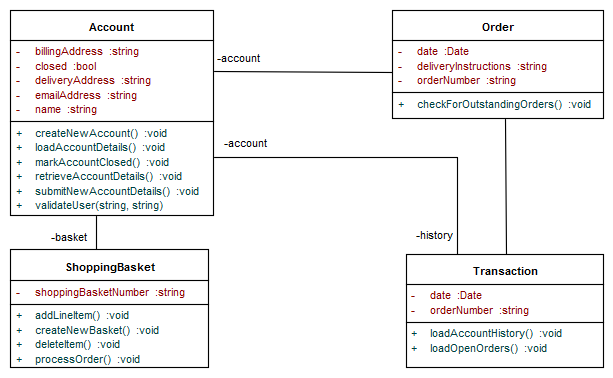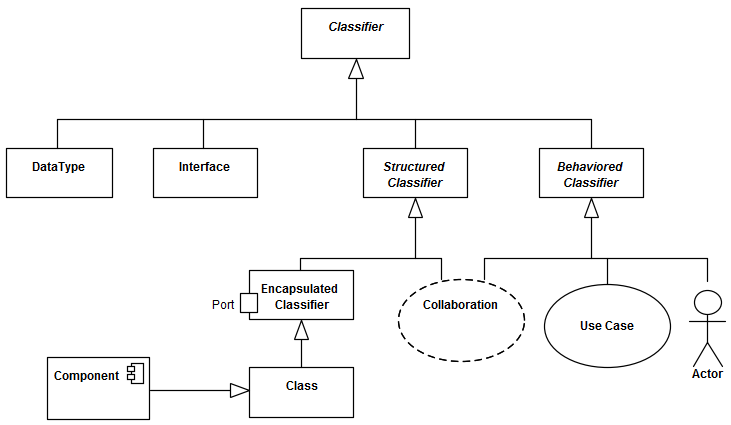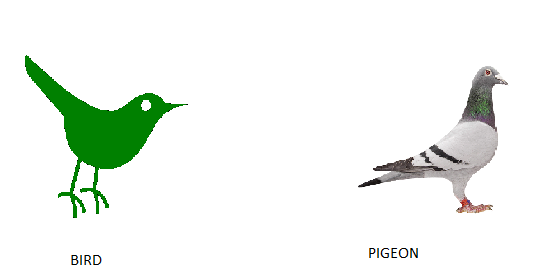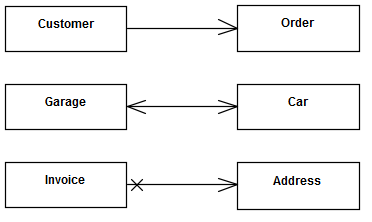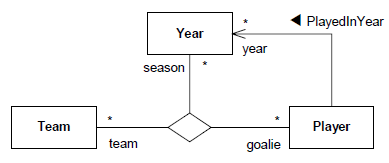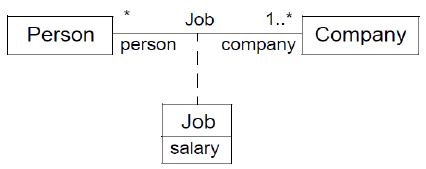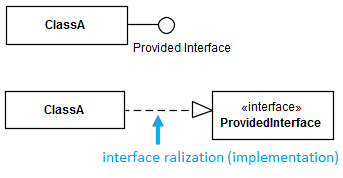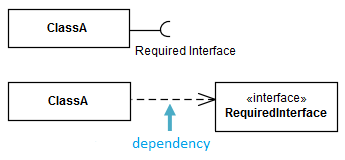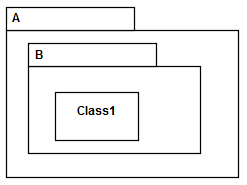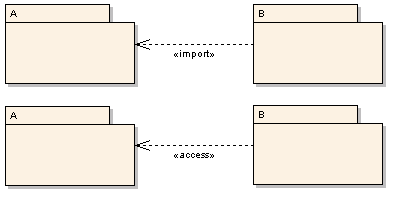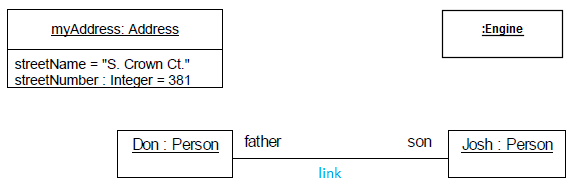UML Class Diagram
Jump to navigation
Jump to search
Class Diagram⌘
Describes the structure of a system by showing the system's classes, their attributes, and the relationships among the classes.
Classifier⌘
- an abstract base class
- describes a set of instances that have features in common
Feature⌘
- declares a behavioral or structural characteristic of instances of classifiers
- structural feature describes a structure of an instance of a classifier (e.g. property)
- behavioral feature specifies an aspect of the behavior of classifier's instances (e.g. operation)
Property⌘
- Properties are Structural Features that represent:
- the attributes of Classifiers (when a property is owned by a Classifier other than an Association)
- the member Ends of Associations
- the parts of Structured Classifiers.
Operation⌘
- a behavioral feature of a classifier, which specifies name, type, parameters, and constraints
- can have preconditions and postconditions
- can have a type (the type of the return parameter)
- example:
+ createWindow (location: Coordinates): Window
Class⌘
- describes a set of objects that share the same specifications of features (attributes and operations)
- is a special classifier
- an object is an instance of a class
Generalization⌘
- relationship between a more general classifier and a more specific classifier
- each instance of the specific classifier is also an indirect instance of the general classifier
- the specific classifier inherits the features of the more general classifier
Generalization Example⌘
Association⌘
- specifies a relationship between instances
- describes a set of tuples whose values refer to typed instances
- declares that there can be links between instances of the associated types
Multiplicity⌘
- specifies how many objects of the opposite class an object can be associated with
- is a range of the minimum and maximum values
- syntax: number or min..max
| Multiplicity | Notation |
|---|---|
| zero | 0 or 0..0 |
| exactly one | 1 |
| zero or one | 0..1 |
| zero or more | 0..* or * |
| one or more | 1..* |
Multiplicity example⌘
Multiplicity - order and uniqueness⌘
- Multiplicity defines a specification of order and uniqueness of the collection elements.
- This option can specify whether the values should be unique and/or ordered.
- ordered: the collection of values is sequentially ordered (default: not ordered)
- unique: each value in the collection of values must be unique (default: is unique)
Property = End or Attribute⌘
- specifies whether one object can be accessed directly from another
Aggregation⌘
- shows how something (whole) is composed of parts
- parts can exist separately - can be shared
- precise semantics of aggregation varies by application area and modeler :)
Composition⌘
- a strict form of aggregation
- the whole is the owner of its parts
- parts can not be shared
- the existence of its parts depends on the whole
Aggregation / Composition Example⌘
N-ary association⌘
- if an association has more than two end points (here: ternary association)
- Notation: a rhombus is used as a connection point
Association Class ⌘
- Association Class ia a model element that has both Association and Class properties.
- It not only connects a set of Classifiers but also defines a set of Features that belong to the Association itself.
Dependency ⌘
- a relationship that signifies that a model element(s) requires other model element(s) for their specification or implementation
- the complete semantics of the depending elements is dependent on the definition of the supplier element(s)
- the modification of the supplier may impact the client model elements
- the semantics of the client is not complete without the supplier
- the type of dependency can be specified by using a keyword or stereotype
Interface⌘
- is a kind of classifier that represents a declaration of a set of coherent public features and obligations
- an interface specifies a contract; any instance of a classifier that realizes the interface must satisfy that contract
- it is just declaration - so it is not instantiable
Provided Interface⌘
- an interface realized by a classifier is its provided interface
- represent the obligations that instances of that classifier have to satisfy
Required Interface⌘
- specify services that a classifier needs in order to perform its function
Interface Example⌘
Named Element⌘
- represents an element that may have a name and a visibility
| Visibility Kind | Notation |
|---|---|
| public | + |
| private | - |
| protected | # |
| package | ~ |
Package⌘
- used to group elements, and provides a namespace for the grouped elements
- qualified name:
package name::element name
Package Import, Access⌘
A package import is defined as a directed relationship that identifies a package whose members are to be imported by a namespace.
Two types:
- «import» for a public package import
- transitive: if A imports B and B imports C then A indirectly imports C
- «access» for a private package import
- intransitive
Package Import Example⌘
- elements in Types are imported to ShoppingCart, and then further imported to WebShop
- elements of Auxiliary are only accessed from ShoppingCart, and cannot be referenced from WebShop
Instance ⌘
- is a concrete instance in the modeled system
- instance = object
Comment⌘
- a textual annotation that can be attached to an element
- may contain information that is useful to a modeler
- can be attached to more than one element
Constraint⌘
- condition or restriction related to an element
- it must always be true
- can be in a formal (OCL) or in a human language
- syntax:
{ [name :] boolean expression }
